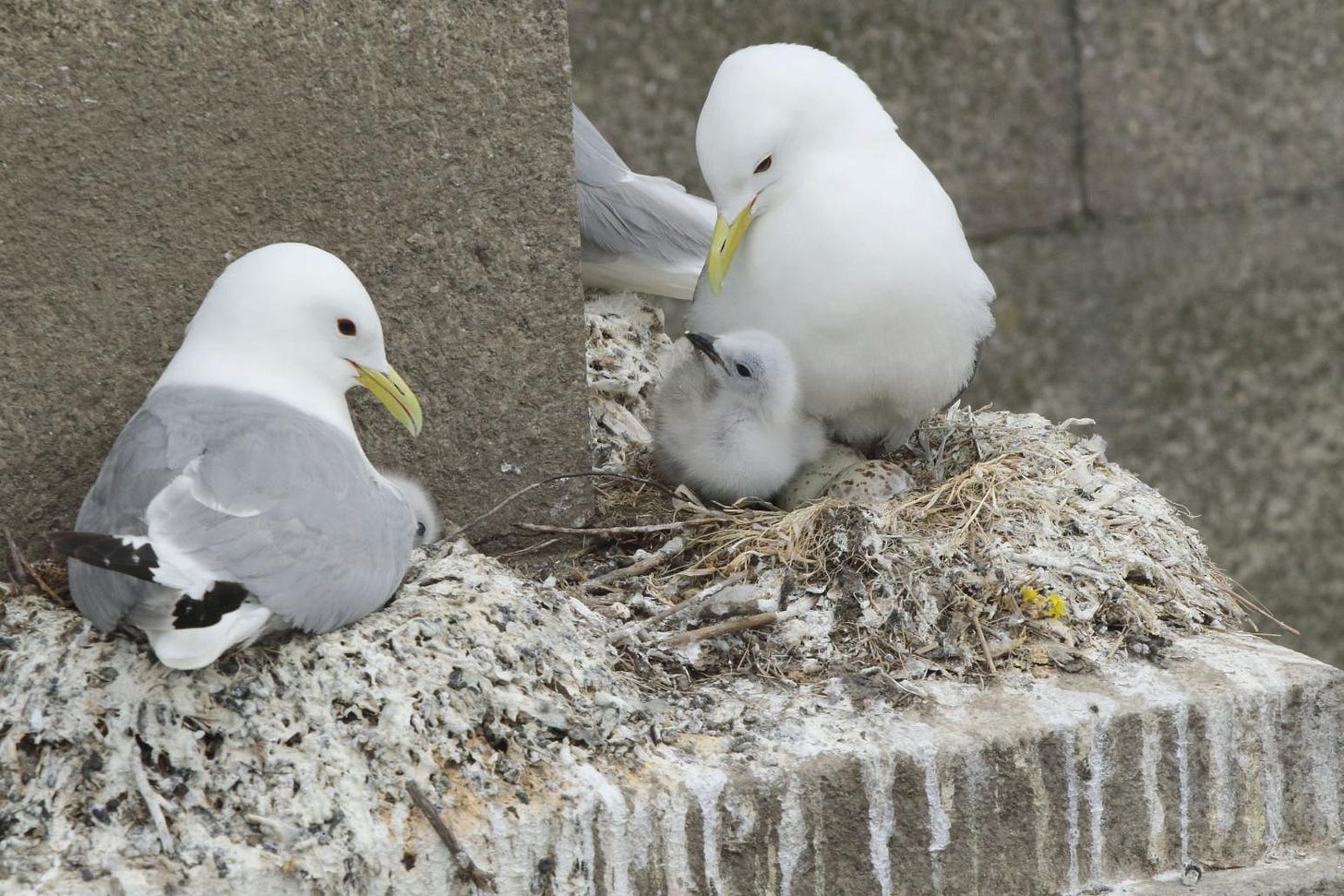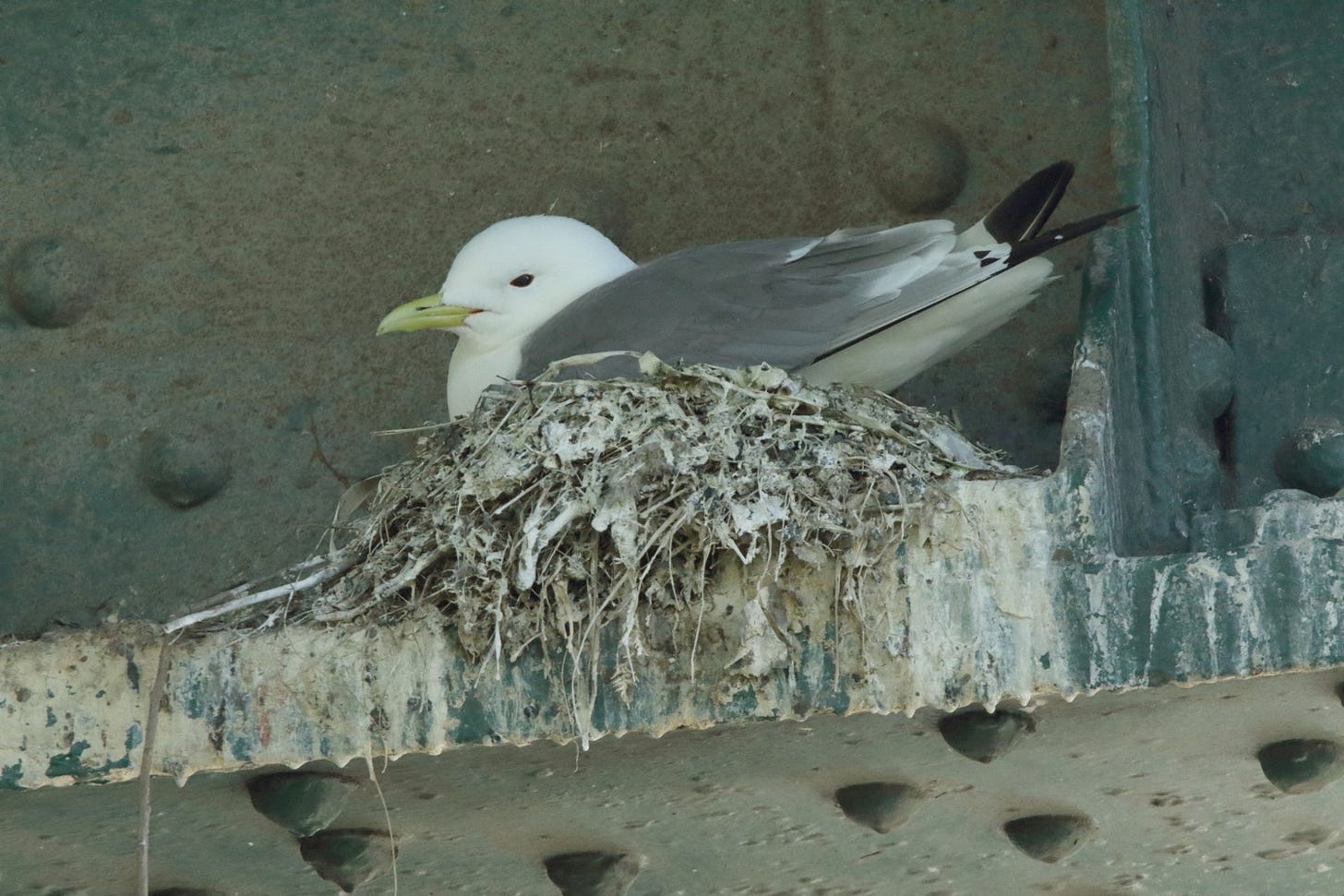Tyne’s kittiwakes weather another tough year
Ups and downs of the Tyne’s kittiwake colony. Tony Henderson reports on the latest figures
There were 1,658 kittiwake nests along the River Tyne this year – down by 18.3% on the 2022 figure of 2,030.
This is mainly due to the ongoing works on the Tyne Bridge and, to a lesser extent, a possible follow-on from summer 2023 when many birds died from avian flu and from which the kittiwake colony is likely still recovering.
The figures come from the annual surveys by North Shields ornithologist and seabird researcher Dan Turner, who has been studying the Tyne kittiwakes since 1994.
Breeding productivity – the number of chicks per nest – for the river as a whole was 0.79 this year, an increase from the 2023 figure of 0.69, which was due to the bird flu effect, but down on the 2024 total of 1.02.
“It is uncertain why there was a reduction in productivity after it held up well in 2024 after bouncing back from the impact of bird flu in 2023,” said Dan.
Average breeding productivity for the river since Dan’s breeding bird surveys began in 1994 is roughly 0.95.
The most popular locations for nests this year were the Akzo Nobel (International Paints) premises in Felling with 249 nests; Baltic 158 nests; Saltmeadows Tower, Gateshead 135; Dean Street railway viaduct in Newcastle 117; Guildhall, Newcastle 50; High Level Bridge 20.
There was a total of 772 nests on the Tyne Bridge, compared to 992 in 2024, a drop due to birds being displaced by the works. A total of 22 nests were on ledges provided by Esh Construction for the displaced birds and random working ledges.
It is thought that many of the displaced birds would not have bred this year.
In 1996 the first kittiwakes – three nests – appeared on the Tyne Bridge, which has peaked at around 1,100 in recent years.
This year was the second of the four-year programme of major works to the Tyne Bridge, and as a member and acting secretary of the Tyne Kittiwake Partnership and long-term Tyne kittiwake surveyor, Dan, and Partnership chair Prof Helen Wilson from Durham University, attended regular meetings with the bridge engineers and ecologists from Newcastle City Council.
Based on the engineering plans for scaffolding placement for 2026, Dan estimates this will mean 396 nesting pairs will be displaced from the bridge.
Dan said: “Both Newcastle City Council (and their ecologists) and Esh Construction should be praised and thanked for their efforts to work with the kittiwakes’ needs taken into consideration.”
Globally, kittiwakes are thought to have declined by around 40% since the 1970s. In the UK, kittiwake numbers have plummeted, particularly in Orkney and Shetland, where breeding birds have fallen by 87% since 2000.
Compared to declines elsewhere in the UK, the Tyne’s kittiwake population has grown and is generally healthy, becoming a part of Tyneside life and an important colony internationally and worthy of protection.




